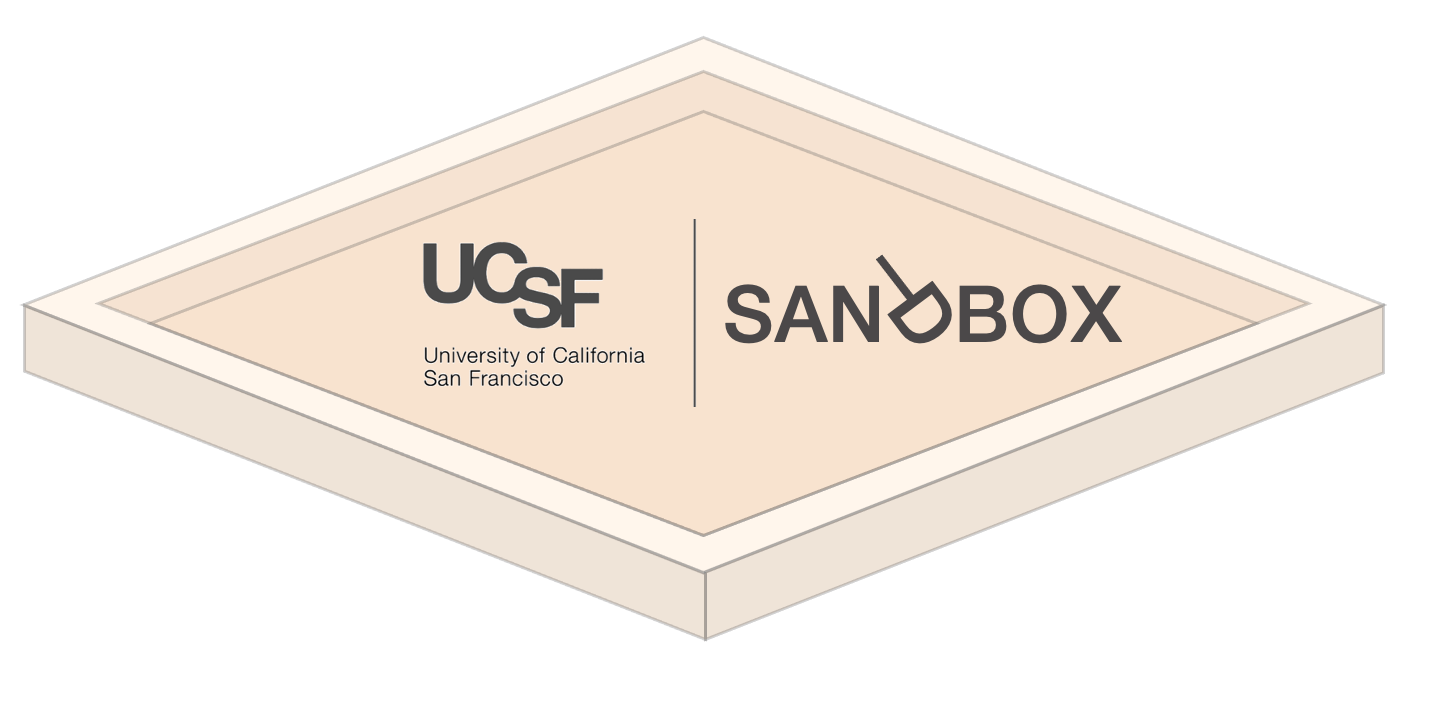Details of the Sandbox:
The Sandbox is to be carefully monitored collaboratory space, located at PH, MB, or MZ.
- At least 12 benches (kneeholes) for collaborative activity are proposed to consist a ‘Central Sandbox’ at a location very close to CoLabs, committed by the Space committee and with approval from the space committee.
- Additional benches worth of space can be offered into the Sandbox via the Space Committee, and subject to administration by Sandbox personnel. (ImmunoX has offered to fund the oversight of this public space for 3 years, see below). Additonal 2-bench allocations within departmental spaces would be reviewed but would likely also be renewable on a routine basis. The Czar of Sandbox would be responsible for ensuring harmony and that this space is returned to next users (Sandbox users relocated to the next Sandbox) as neede
- The Sandbox project includes the hiring of a full-time “Czar/Stoker of Collaboration”. Modeled on the real-life persona of Doug Crawford-- who created and kept excellent and flexible space occupied and usable at high occupancy at the 923 Indiana Incubator—this person will be in charge of weekly walk-through monitoring of the spaces, making sure it is clean and is used and cared for in a manner consistent with the other occupants of adjacent space, taking applications from departments and PIs who would like to cross-fertilize projects and ultimately recruiting other departments and programs who would like to enjoy the benefits of cross-lab/cross-campus embedding of fellows and students. This Czar, along with a small committee of overseers, is responsible for adjudicating any issues regarding safe use of space as well as triaging applications for space.
- Each bench will be configured to have space for set-down science (e.g. a small combination locker for laptops, supplies and Tupperware boxes for embedded people). Lab space also comes with a Tupperware box of loaner (and Czar-maintained) standard lab supplies such as pippetman, pipettors and other similar supplies. The bench will have a monitor and keyboard into which a user can connect a laptop. Other shared equipment may become available an in place based on requests.
- Participating departments to date are ones who would be willing to donate 2 benches on very active research floors adjacent to collections of labs with high collaborative potential. Their students, fellows, staff will have priority for accessing Sandbox space for collaborations.
- The 12-bench space on a single floor is to be outfitted with shared centrifuges and TC equipment as well as a small amount of standard equipment. This equipment will be contributed by ImmunoX and to be shared with respect and according to a code-of-conduct sheet shared with users. The Czar of the Sandbox has the right to deny access to the space if users do not take care of shared equipment in accordance with space rules. Contributing departments will have first priority for applccations to use space, up to the level of their contribution (i.e. give a bench, get a priority for a bench elsewhere).
- The Czar will also be in charge of assessing any monthly consumables budget that are needed, paid either to the hosting department and/or those who initially covered those costs (e.g. ImmunoX). The Czar will also have the final word in renegotiating space on a person-by-person basis (Space committee allocates blocks of space to this) and, through routine walk-throughs, will document usage by the community as well as possible and typically undesirable overflow from bench to bench.
- The budget for the Czar salary and a yearly budget for upkeep/supplies will initially come from generous donations made to ImmunoX for collaboration-enhancing efforts, to share with the community and create community. If the experiment is successful, in future, such funds may come from departments and initiatives for 5 year commitments, ideally with matching funds from campus and/or the medical center who would benefit by the success of this program. We note that this program will be scaleable with additional personnel/space administered at decreasing per sf costs, and the costs of this is modest in comparison with the cost of empty space.
Benefits:
The benefits of the program are believed to be substantial:
- Embed scientists and clinicians from across UCSF into labs that have protocols/personnel to share, to incubate and test the best ideas.
- Create opportunities for true cross-campus collaboration culture.
- Enhance a culture of collaborative and innovative scientific risk taking
- Create a culture of space-sharing that presages a culture-shift to loosening grip on space-ownership and appreciate interactive space.
- Provide and fund a well-conceived plan that is adequately resourced to increase the chances of success.
